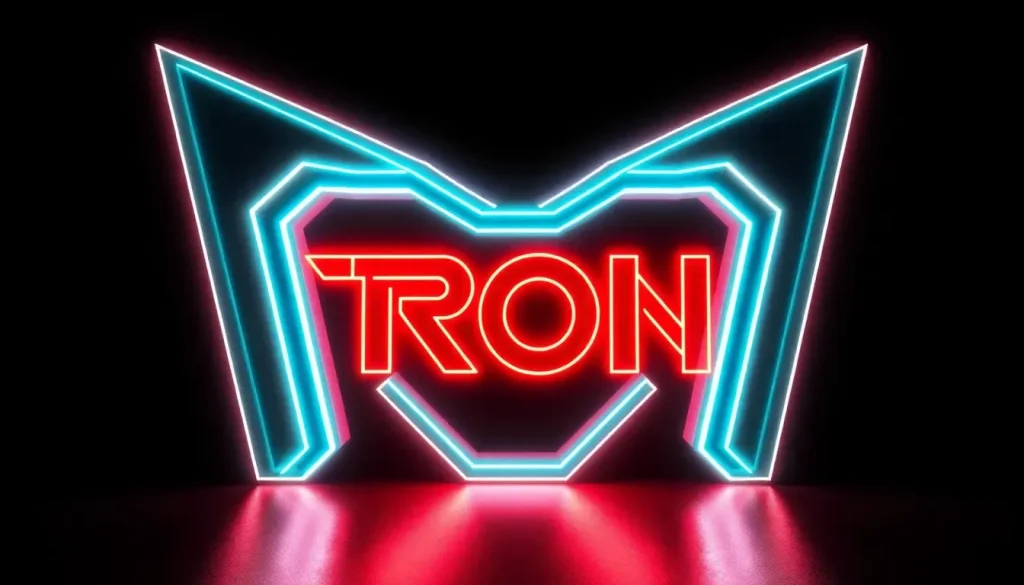What to Remember Before Watching Tron Ares

Tron: Ares, a film directed by Joachim Rønning set to be released in 2025, carries the heavy responsibility of reintroducing the enduring science fiction saga to a new generation while also reviving its original essence that captivated audiences decades ago. The foundation for this iconic franchise was laid by the first film, directed and written by Steven Lisberger, which premiered in 1982. This groundbreaking movie not only pushed the boundaries of visual storytelling but also ventured into an innovative technological world, complete with its own language, rules, and mythology. Its visual effects were nothing short of revolutionary, setting the stage for the future of filmmaking.
The universe of Tron extends beyond the screen and into the realm of computer technology. The protagonist, Kevin Flynn, portrayed by a young Jeff Bridges, finds himself entangled in a corporate conflict where his creativity is stifled by the malevolent ENCOM corporation. In a dramatic turn of events, Flynn is transported into a digital universe after being scanned by a laser from a protective system known as the Master Control Program (MCP). This marks the beginning of his journey in The Grid, a vibrant, complex digital world where his programming prowess comes to life, and he must battle both the MCP and his own creation, Clu (Codified Likeness Utility), to save both the digital and real worlds.
Exploring a New Era in Cinema
The original Tron required a unique visual presentation to depict the digital realm where programs exist as sentient beings. The film's stunning cinematography and special effects played a pivotal role in bringing this vision to life. To create a seamless blend of the real and digital worlds, the production employed a combination of filming techniques. Key aspects include:
- Super Panavision 65mm for live-action sequences.
- VistaVision for computer-generated imagery.
- Innovative lighting techniques to enhance the film's retro-futuristic aesthetic.
Disney, recognizing the ambitious nature of the project, enlisted top-tier special effects companies to forge an interconnected, high-tech world. This endeavor was complemented by the artistic vision of renowned French illustrator Jean Giraud (Mœbius), who designed much of the film's iconic scenery and costumes. The vehicles that traverse Tron City, the capital of the digital realm, were conceived by artist Syd Mead, who crafted designs that captured the essence of a living, breathing technological landscape. This meticulous attention to detail contributed to a film that is considered a groundbreaking milestone in visual effects.
The Intricacies of the Tron Universe
The original Tron film centers around Kevin Flynn's battle against a corrupt corporation aiming to dominate the world of data. While this theme may seem commonplace today, it was groundbreaking for its time, especially given that Flynn embodies the rebellious spirit and technological skepticism of the early 1980s. The plot intricately weaves Kevin's personal struggles with his corporate battles:
- Kevin Flynn is wrongfully terminated from ENCOM by Ed Dillinger (David Warner), who steals his work.
- Flynn seeks to expose Dillinger's deceit while fighting against ENCOM's oppressive tactics.
- His journey into the digital realm leads to a fight for freedom, culminating in his eventual return as ENCOM's CEO.
This narrative not only showcases Flynn's growth as a character but also reflects broader themes of corporate malfeasance and the price of creativity in a technology-driven society.
Understanding the Core of Tron
The term Tron refers to multiple concepts within the film. Primarily, it denotes:
- The digital world itself, comprising the interconnected systems where programs exist.
- The titular program created by Flynn's friend Alan Bradley, designed to safeguard the network.
- A pivotal video game that launches Flynn into stardom in the gaming industry.
Interestingly, in Tron: Legacy, the character of Tron reappears, portrayed by Bruce Boxleitner, this time as Rinzler, a darker version of his former self. Yet, his inherent heroism shines through during critical moments, reinforcing his status as a beloved figure from the original film.
Key Elements of the Tron Saga
The 1982 film not only showcased technological innovations but also established a rich mythology that Tron: Ares intends to revisit with great care. The sequel does not merely aim to replicate the original's success through updated visuals; it seeks to delve into its most memorable aspects:
- Users vs. Programs: In the Tron universe, users (humans) interact with autonomous programs, creating a dynamic relationship that blurs lines between creator and creation.
- Identity Discs: Programs carry identity discs that are crucial for their existence. Losing one equates to death in their world.
- Games: The various competitions among programs serve to gauge their strength and maintain the system's equilibrium.
- Artificial Intelligence: The films explore themes of machine sentience and the ethical implications of creating independent life forms.
Users and Programs in Tron
In the Tron ecosystem, a clear distinction exists between users and programs. Users are the humans operating the technologies, while programs are the digital entities that exist within the system. The arrival of Kevin Flynn in the first film serves as a catalyst for significant changes in the digital realm. Programs must protect their identity discs, vital for their survival, as losing them results in their complete deletion—a fate akin to death.
The Role of Games
Games in the Tron universe are more than mere entertainment; they function as a means of survival and a method for programs to assert their dominance. The gladiatorial nature of these contests adds a layer of tension and excitement, as programs must navigate extreme challenges to prove their worth.
Artificial Intelligence and Its Implications
While the original film hinted at the potential for machines to achieve self-awareness, it did not delve deeply into the concept of artificial intelligence as we understand it today. However, Tron: Ares aims to tackle contemporary questions about technology and consciousness, exploring the implications of creating life-like intelligences within digital spaces.
Set for release in 2025, Tron: Ares will follow a narrative arc that connects to the events of Tron: Legacy, which debuted in 2010 and was helmed by Joseph Kosinski. This sequel picks up after seven years of Kevin Flynn's mysterious disappearance, with his son Sam (Garrett Hedlund) grappling with his father's legacy and the corporate turmoil within ENCOM.
As Sam navigates his inherited responsibilities, he receives an enigmatic signal from his father's old arcade, leading him to an abandoned console that transports him back to the digital world, revealing the shocking truth about his father's fate and the perils of the digital realm.
The Quest for Freedom
The narrative intensifies as Sam discovers that his father has been betrayed by CLU, a digital counterpart who sought to eliminate all autonomous life forms known as Isos. These beings, possessing the potential for independence, pose a threat to the established order within the digital world. The climax of Tron: Legacy sees a struggle for freedom, culminating in a poignant sacrifice that underscores the film's exploration of identity, technology, and the human experience.
Ultimately, the legacy of Tron continues to evolve, raising questions about the relationship between humanity and technology, and the possibilities that lie ahead in a world increasingly defined by digital interactions.
For those interested in an engaging overview, check out this informative video that dives deeper into the Tron universe:




Leave a Reply